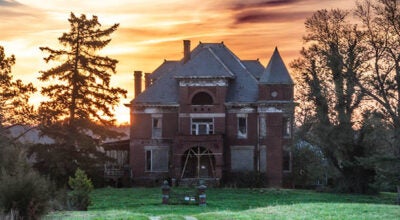Yellow confusion in Mother Nature’s garden
Published 8:27 am Thursday, June 7, 2018

- Can you tell them apart? Without a careful examination of the seed pods, it can be quite difficult. The thug is on the right.
It all began with a series of posts on my Facebook wildflower community page. There was a flurry of photos of plants with yellow blooms that community members referred to as celandine or wood poppies. The plants didn’t all look the same. Some had blue green foliage, while others had foliage that was more distinctly just green. All the plants had yellow blooms, but they were arranged somewhat differently and seemed to be slightly different in size. At a glance, however, both plants looked remarkably similar. And the common names, well, they just increased the level of confusion because they can vary so much by locality. What is called a wood poppy in one area can be called something entirely different in another. And just to add to the chaos, neither wood poppies nor greater celandine are found in this area, and yet the photos kept being posted. If was enough to make a native plant enthusiast want to hide under a log somewhere.
So … what was going on? Confusion between Chelidonium majus, greater celandine, an introduced species and Stylophorum diphyllum, celandine poppy or wood poppy, a native species. Greater celandine was brought here in the 1600s for use as an herbal remedy for skin lesions and vision problems. Both Dioscorides, a Greek physician and pharmacologist, and Pliny the Elder, a Roman naturalist, extoled the virtues of greater celandine. It could help overcome enemies and cure most illnesses. For nearly 20 centuries, it was revered as a head-to-toe curative. Even today, this plant is considered a folk remedy for many ailments and was touted as a cure for cancer in parts of Europe as late as the 1990s. Unfortunately, greater celandine’s claims to work medical miracles seem to be false. It’s just a tough, rapidly growing plant with the potential to do harm. In some states, it’s considered a problem.
Stylophorum diphyllum, our native wood poppy and the only native poppy in the eastern United States, can’t lay claim to any miraculous curative properties. It just has larger, shinier blooms and a distinctive fuzzy seed pod. It’s a very attractive plant. And therein lay the answer as to why there were so many discoveries of a plant that’s only found in seven counties in the far western part of the state. Because the wood poppy is very pretty and easy to grow, it’s widely sold by garden centers for use in native plant gardens and sometimes these plants escape into local woods. And sometimes people post photos of plants growing in their gardens and don’t reveal that fact.
Stylophorum diphyllum, out native wood poppy, is a fabulous addition to the home garden. In the wild, it’s usually found in rich cove and slope forests, usually over limestone or dolomite, but it’s quite adaptable. Please be careful that what you purchase at the nursery is this plant and not its evil twin.
CYNTHIA WOOD is a master gardener who writes two columns for The Herald. Her email address is cynthia. crewe23930@gmail.com.





